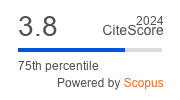Article | Open Access
Investigating the Nonlinear Relationship Between Car Dependency and the Built Environment
| Views: | 3841 | | | Downloads: | 2051 |
Abstract: Car-dominated daily travel has caused many severe and urgent urban problems across the world, and such travel patterns have been found to be related to the built environment. However, few existing studies have uncovered the nonlinear relationship between the built environment and car dependency using a machine learning method, thus failing to provide policymakers with nuanced evidence-based guidance on reducing car dependency. Using data from Puget Sound regional household travel surveys, this study analyzes the complicated relationship between car dependency and the built environment using the gradient boost decision tree method. The results show that people living in high-density areas are less likely to rely on private cars than those living in low-density neighborhoods. Both threshold and nonlinear effects are observed in the relationships between the built environment and car dependency. Increasing road density promotes car usage when the road density is below 6 km/km2. However, the positive association between road density and car use is not observed in areas with high road density. Increasing pedestrian-oriented road density decreases the likelihood of using cars as the main mode. Such a negative effect is most effective when the pedestrian-oriented road density is over 14.5 km/km2. More diverse land use also discourages people’s car use, probably because those areas are more likely to promote active modes. Destination accessibility has an overall negative effect and a significant threshold effect on car dependency. These findings can help urban planners formulate tailored land-use interventions to reduce car dependency.
Keywords: built environment; car dependency; machine learning; nonlinearity; Puget Sound; threshold effects
Published:
© Jun Cao, Tanhua Jin, Tao Shou, Long Cheng, Zhicheng Liu, Frank Witlox. This is an open access article distributed under the terms of the Creative Commons Attribution 4.0 license (http://creativecommons.org/licenses/by/4.0), which permits any use, distribution, and reproduction of the work without further permission provided the original author(s) and source are credited.


